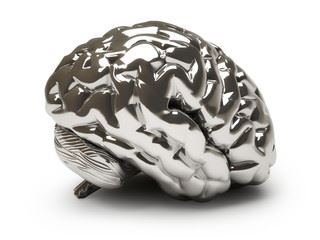
The relation between major depressive disorder and brain iron concentrations remains speculative. The brain requires iron for various functions, including dopamine synthesis, myelin formation, oxygen transport, and energy metabolism. However too much iron can cause inflammation and neurotoxicity. Studies have shown that depressed patients have increased concentrations of iron in their hair and nails and decreased concentrations of iron in their blood, but these studies tell us nothing about iron levels in the brain.
Since iron is ferromagnetic, Magnetic Resonance Imaging (MRI) offers a non-invasive method to measure brain iron concentrations. Several studies employing older MRI technology demonstrated elevated levels of iron in specific brain regions among patients with severe depression.
Jakary et al. [Journal of Affective Diseases] used a newer and more powerful ultra-high field 7 Tesla MRI method, which offers increased sensitivity in measuring brain iron concentration. The researchers used this technology to quantify brain iron concentrations in individuals with major depressive disorder participating in Mindfulness-Based Cognitive Therapy (MBCT) and compared their iron levels and cognitive functioning to that of healthy controls.
The researchers recruited 17 medication-free patients diagnosed with major depressive disorder (76% female; average age = 31) and 14 age- and gender-matched healthy controls. Participants with depression were assessed for brain iron concentrations, depressive symptoms, and cognitive functioning before and after participating in MBCT. The regions of interest for MRI brain analysis included the anterior cingulate cortex, caudate, putamen, globus pallidus, and thalamus. The MRI measurements involved assessing local field shifts (LFS) in gradient-recalled echo phase images, where lower LFS values indicate higher iron concentration levels.
MBCT was delivered in 8 weekly 2.5 hour group sessions with 30-45 minutes of daily home practice. Twelve of the patients successfully completed MBCT and all the MRI assessments. Healthy controls did not participate in MBCT and were assessed on all measures at baseline only.
The results showed that, at baseline, depressed patients exhibited significantly higher iron concentrations in the left global pallidus and putamen, as well as significantly slower information processing speed on cognitive tests compared to healthy controls. Depressive severity in depressed patient group was correlated with significantly higher iron concentrations in five brain regions of interest.
All MBCT participants experienced a meaningful improvement in their depressive symptoms after MBCT, with six individuals experiencing complete depression remission. Depressed patients also significantly improved on measures of executive function and attention after MBCT.
Brain iron concentrations did not change significantly from baseline to post-treatment, and changes in values were uncorrelated with improvements in depression scores. However, patients with higher iron concentrations in the right caudate nucleus at baseline showed significantly greater posttreatment improvement in depressive symptoms.
In addition, patients with higher iron concentrations in three regions of interest at baseline showed significantly greater improvement on a measure of verbal learning and memory after MBCT.
The study demonstrates that using the ultra-high field MRI method enables the detection of brain iron concentrations in specific regions of interest, which can serve as biomarkers for depression and its response to MBCT. The study is limited by technical factors (e.g., how myelin alterations may affect LFS values) that may reduce the validity LFS values as a surrogate measure of iron concentration and the absence of a no-treatment control.
Reference:
Jakary, A., Lupo, J. M., Mackin, S., Yin, A., Murray, D., Yang, T., Mukherjee, P., Larson, P., Xu, D., Eisendrath, S., Luks, T., & Li, Y. (2023). Evaluation of major depressive disorder using 7 Tesla phase sensitive neuroimaging before and after mindfulness-based cognitive therapy. Journal of Affective Disorders, 335, 383–391.
Link to study